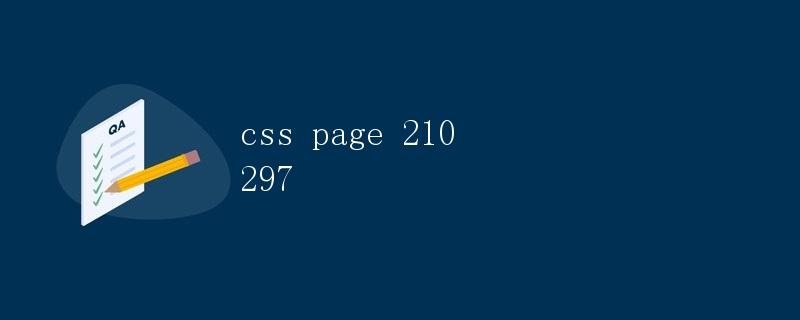CSS page design
CSS Page Design

In web design,
Layout Design
Box Model
In CSS, each element is considered a rectangular box, consisting of a content area, padding, borders, and margins. This model, called the box model, allows you to control the position and size of an element on a page by setting its width, height, padding, and margins. For example, the following code demonstrates how to set the width, padding, and border of a box:
.box {
width: 200px;
padding: 20px;
border: 1px solid #000;
}
Floating Layout
Floating layout is a common layout method that allows elements to be freely arranged on a page. By setting the float property of an element to left or right, you can float the element to the left or right side of the page, causing surrounding content to flow around it. For example, the following code demonstrates how to implement a floating layout:
.float-left {
float: left;
width: 50%;
}
.float-right {
float: right;
width: 50%;
}
Color and Font Settings
Color Settings
Color is a crucial element in web design. Using CSS, we can set different background colors, text colors, and border colors for elements, making the page more vivid and rich. For example, the following code demonstrates how to set the background color and text color of an element:
.colorful-box {
background-color: #f00;
color: #fff;
}
Font Settings
Font selection and layout are also important factors to consider in page design. Using CSS, we can set attributes such as font size, font style, and font weight to control the display of text. For example, the following code demonstrates how to set an element’s font size and font style:
.font-style {
font-size: 16px;
font-family: Arial, sans-serif;
}
Animation Effects
Transition Effects
CSS3 provides a rich set of animation effects that can make web pages more vivid and engaging. Transition effects are a commonly used animation effect that smoothly changes the value of an element’s attributes, such as color, size, and position. You can achieve these effects by setting the transition property of an element. For example, the following code demonstrates how to implement a color transition effect on an element:
.transition-box {
width: 100px;
height: 100px;
background-color: #f00;
transition: background-color 0.5s;
}
.transition-box:hover {
background-color: #00f;
}
Through the above introduction, we can see the importance and flexibility of CSS in web design. By using CSS wisely, we can create beautiful and powerful web pages, providing users with a better browsing experience.